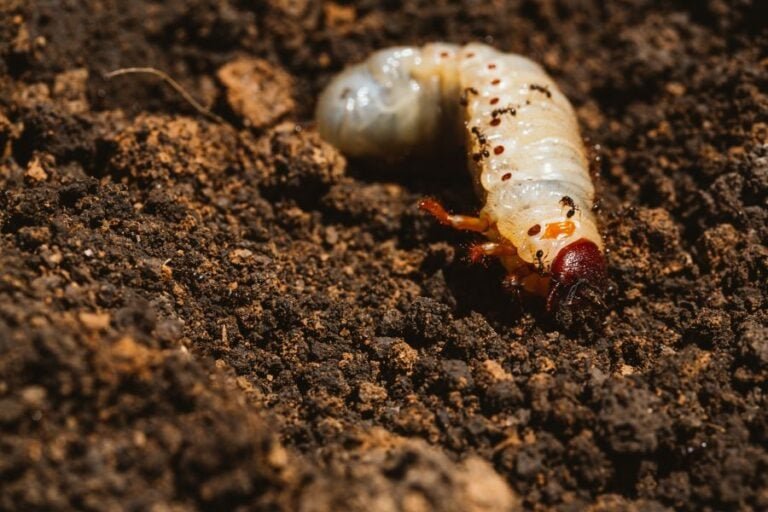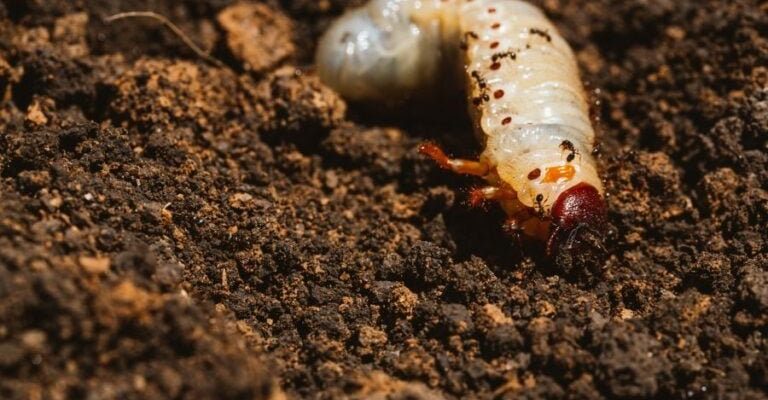
So, how can you tell if these pesky little pests are invading your yard? Don’t worry; we’re going to break it down step by step, making it as easy to understand as a sunny day in June. You’ll learn to spot the early signs of grub worms lurking under your sod and what you can do to tackle the problem head-on.
What Are Grub Worms, Anyway?
Grub worms are the larvae of certain beetles, such as Japanese beetles and June bugs. They’re usually white or cream-colored and have a soft, C-shaped body. Think of them as the teenage stage of beetles—they might look cute, but they can cause serious trouble for your lawn. As they grow, they burrow and munch on the grass roots, leading to spots in your lawn that can turn brown and die off.
You might be wondering how they even get there in the first place. Adult beetles lay eggs in your soil, and once the larvae hatch, they begin their “devouring” phase. This can happen during the warm summer months, and if conditions are right, a whole swarm can take over your yard in no time.
Signs of Grub Worm Damage
To catch these critters before they ruin your lawn, it’s essential to know the signs of grub worm damage. Here are a few things to keep an eye on:
- Brown Patches: If you notice irregular patches of brown grass, it could be a telltale sign. Healthy grass is resilient, but when it’s being eaten from below, it starts to show distress.
- Soft Spots: When you walk on your lawn, does it feel spongy or soft in certain areas? That could mean grubs are eating away at the roots, making the grass unstable.
- Increased Animal Activity: If you see birds pecking at your lawn or raccoons and skunks digging in your yard, they might be after those tasty grubs.
Spotting these signs early can save you a lot of trouble later on. Nobody wants to spend a Saturday repairing a damaged lawn!
How to Inspect Your Lawn for Grub Worms
Now that you know what to look for, let’s talk about how you can check for grubs yourself. It’s pretty simple and only takes a few minutes. Here’s what you do:
1. **Dig a Test Patch:** Grab a spade or a shovel and dig a small square section of your lawn—about one foot by one foot and 3-4 inches deep.
2. **Look for Grubs:** Turn over the sod and check for any grub worms. They’ll be nestled in the soil, often curled up. If you spot five or more grubs in this small area, it might indicate a bigger problem.
3. **Assess the Damage:** While you’re down there, check the roots of the grass. If they look brown and mushy, that’s another sign of trouble.
If you find grubs, don’t panic! Early detection means you can take effective action to save your lawn.
Preventing Grub Worm Infestations
If you want to keep your lawn healthy and grub-free, prevention is key. Here are some strategies to help you out:
- Healthy Soil: Grubs thrive in unhealthy soil. Aerating your lawn improves water and nutrient absorption, making your grass stronger and less appealing to pests.
- Beneficial Nematodes: These tiny, beneficial worms are natural predators of grubs. Introducing them to your soil can help keep grub populations in check.
- Regular Lawn Maintenance: Mowing your grass to the right height and watering it properly will help keep it robust and less susceptible to grub damage.
By implementing these preventive measures, you can reduce the chances of a grub invasion before it starts.
Treating Grub Worms Effectively
If you’ve discovered grubs in your lawn, it’s time to act. Here are a few treatment options to consider:
1. **Chemical Treatments:** There are a variety of insecticides available that target grub worms. Be sure to follow the instructions carefully and apply at the right time, usually in late summer or early fall when grubs are most active.
2. **Natural Solutions:** If you’re looking for a more eco-friendly approach, products containing milky spore or beneficial nematodes can be very effective. These natural methods don’t harm your lawn and can help rejuvenate the ecosystem.
3. **Cultural Practices:** You can also support your lawn’s health with proper watering and fertilization. Strong grass is less likely to be damaged by pests, including grubs.
When to Call the Professionals
Sometimes, despite our best efforts, the grub problem can get out of hand. If you’ve tried treatments but still see damage, it might be time to call in the pros. Lawn care specialists have access to advanced products and techniques that can effectively eliminate grubs and help your lawn recover.
Don’t hesitate to reach out for a consultation. A healthy lawn is worth the investment!
Grub worms can be sneaky little invaders that ruin the beauty of your yard. But with a bit of awareness, you can catch them before they wreak havoc. Remember the signs of grub damage—brown patches, soft spots, and increased animal activity. Regular inspection and proactive measures can help safeguard your lawn from these pests.
So next time you’re outside enjoying your lawn, take a moment to check for any early signs of grubs. With a little effort, you can maintain a healthy, vibrant lawn that everyone will admire. Let’s keep those grubs at bay, so your yard can shine!

